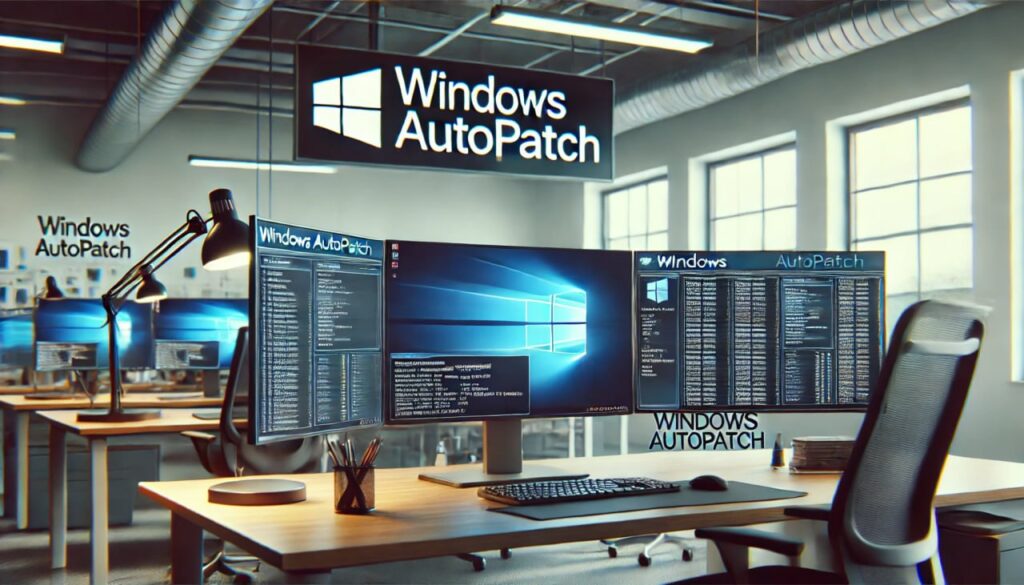
In today’s fast-paced business world, where technology is a vital part of every operation, keeping software systems up to date is crucial. Regular software updates and patches are essential for the security and efficiency of any organization. However, managing and deploying these patches manually can be both time-consuming and prone to errors. This is where Windows Autopatch comes into play. By automating the patch deployment process, Windows Autopatch helps businesses streamline their software update management, enhance security, and reduce the need for manual intervention, resulting in better productivity.
What is Windows Autopatch?
Windows Autopatch is a service offered by Microsoft that simplifies the process of deploying patches and updates to Windows systems. It automatically manages and applies updates for the operating system and Microsoft software, such as Office 365. This eliminates the need for IT teams to manually check for updates and deploy them across devices, saving time and reducing human error. By automating these routine tasks, Windows autopatch ensures that systems remain secure and up-to-date with minimal effort from the IT staff.
The main purpose of Windows Autopatch is to simplify patch management and reduce the administrative burden on IT professionals. With this service, organizations can focus more on their core activities without worrying about managing and applying software patches. Whether you’re running a small business or a large enterprise, Windows Autopatch is designed to make the patching process as efficient and seamless as possible.
How Windows Autopatch Works
Windows Autopatch automates the patch deployment process by working behind the scenes. Once a device is enrolled in the service, it automatically receives updates as soon as they become available. These updates include critical security patches, bug fixes, and feature updates. The system ensures that patches are applied in a manner that minimizes downtime and disruption to users.
Here’s a brief overview of how Windows Autopatch works:
- Automatic Update Detection: Windows Autopatch continuously monitors available updates for the system and its installed software. When a new update is released, the service detects it and prepares for deployment.
- Patch Testing: Before being rolled out across all devices, patches are tested on a small group of devices. This helps ensure that the update does not cause any issues and is safe for widespread deployment.
- Deployment: Once the patch has been tested and confirmed to be safe, Windows Autopatch deploys the update to all eligible devices automatically. This ensures that the patching process is fast and efficient.
- Compliance Reporting: The service provides detailed reports on the status of patches, allowing IT teams to track which devices have been updated and whether any issues have occurred during the deployment.
By automating this process, Windows Autopatch removes the need for IT staff to manually download, install, and verify patches. This automation results in significant time savings and reduces the chance of human error.
The Benefits of Windows Autopatch
There are several benefits to using Windows Autopatch in your organization. Below, we explore some of the key advantages that make this service an excellent choice for businesses looking to streamline their software update processes.
1. Improved Security
One of the primary reasons for applying patches is to fix security vulnerabilities. Cyber threats are constantly evolving, and outdated software can leave systems exposed to potential breaches. Windows Autopatch ensures that patches are deployed promptly, reducing the risk of security vulnerabilities being exploited. By automating the update process, the service makes it easier for organizations to stay on top of security patches without any manual intervention.
2. Time and Cost Savings
Manual patch management can be a time-consuming process, especially for large organizations with numerous devices to manage. Windows Autopatch automates this entire process, freeing up valuable time for IT teams to focus on other important tasks. Additionally, by reducing the amount of manual work involved, businesses can cut down on the cost associated with patch deployment, including labor costs and the potential cost of security incidents due to missed updates.
3. Increased Productivity
With Windows Autopatch, updates are deployed automatically without interrupting users’ workflows. Since the patching process occurs in the background, employees can continue working without being disrupted by manual update installations. This leads to less downtime and increased overall productivity within the organization.
4. Seamless Integration
Windows Autopatch integrates seamlessly with Windows Update for Business, a Microsoft service that enables organizations to manage updates for Windows 10 and 11. This makes it easy for businesses to incorporate Autopatch into their existing update management systems without needing to overhaul their entire infrastructure.
5. Reduced Risk of Human Error
Manual patching is susceptible to human error, which can result in failed updates, delayed patches, or incomplete deployments. Windows Autopatch reduces the risk of these mistakes by fully automating the process. This means that the patches are applied consistently across all devices, ensuring that no machine is left behind.
6. Compliance and Reporting
Windows Autopatch provides comprehensive compliance reporting, allowing businesses to track the status of patches and updates across all devices. This is especially important for organizations that need to meet specific regulatory requirements or maintain a high level of security. With Autopatch, IT teams can generate detailed reports to demonstrate compliance and identify any gaps in the update process.
7. Improved User Experience
A key challenge with software updates is that they can often disrupt users, requiring them to restart their devices or interrupt their work. Windows Autopatch minimizes this disruption by ensuring updates are applied efficiently and in the background. This results in a smoother user experience and less frustration for employees who rely on their devices for daily tasks.
How Windows Autopatch Enhances IT Efficiency
IT teams play a critical role in maintaining the security and functionality of an organization’s systems. However, traditional patching methods can be cumbersome and time-consuming, often requiring manual effort and attention to detail. Windows Autopatch enhances IT efficiency by automating the entire patch deployment process.
By taking care of routine tasks like detecting and applying updates, Autopatch allows IT professionals to focus on more strategic activities. This can include tasks like enhancing system security, troubleshooting issues, or supporting employees with specific technical needs. With Windows Autopatch in place, IT teams can be more proactive in managing their infrastructure rather than spending time on routine maintenance.
Conclusion
Windows Autopatch is a game-changer for organizations looking to streamline their patch management processes. By automating the deployment of updates, it reduces manual effort, saves time, and ensures that systems remain secure and up to date. Whether you are a small business or a large enterprise, Windows Autopatch can help enhance IT efficiency and boost productivity by simplifying the patching process.
For businesses looking for an easy and effective way to manage software updates, Windows Autopatch provides the ideal solution. To learn more about how Windows Autopatch can improve your organization’s patch deployment process, visit Always Up to Date.






